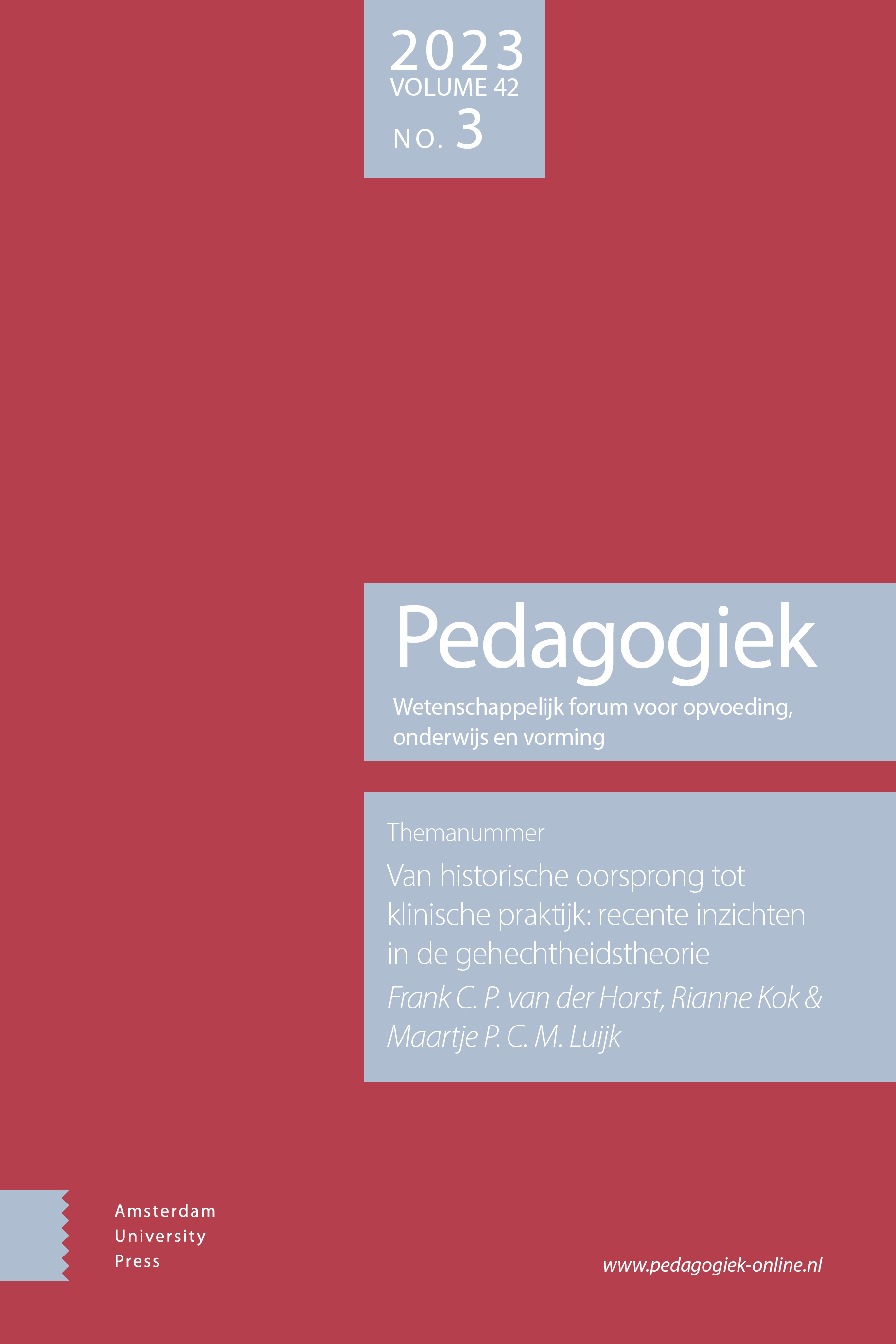-
oa Lost in translation? Het belang van meer duidelijkheid bij het gebruik van kernbegrippen uit de gehechtheidstheorie in wetenschap en praktijk
- Amsterdam University Press
- Source: Pedagogiek, Volume 42, Issue 3, dec. 2022, p. 280 - 302
-
- 01 dec. 2022
Samenvatting
De gehechtheidstheorie heeft een grote invloed gehad op de manier waarop er zowel in de wetenschap als in de praktijk gedacht wordt over de sociale en emotionele ontwikkeling van kinderen. Kernbegrippen die te maken hebben met gehechtheid, zoals “veiligheid”, “sensitiviteit” of “desorganisatie” zijn herkenbaar voor veel mensen. Binnen het gehechtheidsonderzoek wordt echter geen van deze begrippen op dezelfde manier gebruikt als in het dagelijkse taalgebruik. Dit artikel beschrijft de misverstanden die kunnen ontstaan door onduidelijkheden in de terminologie, waarbij onderzoekers uit bijv. de pedagogische wetenschappen en de sociale psychologie, en professionals uit bijv. de (ortho)pedagogiek, de klinische psychologie of de jeugdbescherming vergelijkbare begrippen gebruiken, maar hier niet dezelfde invulling of betekenis aan geven. Dit veroorzaakt misverstanden en staat een effectieve communicatie en samenwerking tussen wetenschap en praktijk in de weg.
Om een betere communicatie te bevorderen, is het belangrijk om meer duidelijkheid te verschaffen over de technische betekenis van begrippen en termen die binnen het gehechtheidsonderzoek gebruikt worden. Om hier een begin mee te maken, is onlangs een Engelstalige begrippenlijst gepubliceerd op de website van de Society for Emotion and Attachment Studies (https://seasinternational.org). In deze paper introduceren wij deze begrippenlijst en de Nederlandse vertaling van deze begrippen. De begrippenlijst is bedoeld als het begin van een naslagwerk voor onderzoekers, clinici en professionals die werken met kennis over gehechtheid. De lijst is een eerste stap richting heldere definities van kernbegrippen met betrekking tot gehechtheid en meer overeenstemming over de betekenis hiervan. Het uiteindelijke doel is meer en betere uitwisseling tussen onderzoek en praktijk op het gebied van gehechtheid.


